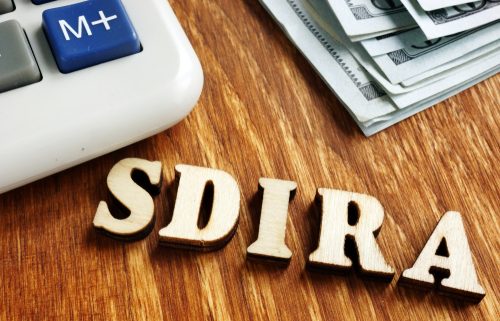Are You on Track for Retirement? How a Self-Directed IRA Can Help
Are you ready for retirement? For most Americans, the answer will be definitively no, because they are not yet at retirement age. But the question still lingers for those who wonder if they are on track to retire. As MarketWatch reports, “A contribution rate of 10% starting in your mid-20s cuts the risk of running out of money in retirement to about 30%.” For those who are catching up, it’s possible that even more aggressive saving policies are required. But there’s another way that investors can make the most of their retirement dollar: a Self-Directed IRA.
Using a Self-Directed IRA, an investor can access a range of investments that they know better than the stock market. For example, an experienced real estate investor can use an IRA in this manner to invest in real estate. This allows them to build up rental properties, for example, that produce income every month, which in turn not only enhances the wealth of the IRA, but allows someone confidence that when they retire, they will have the income in place to handle the challenges of living on a fixed income.
How to Tell if You are on Track for Retirement
It’s important to remember when planning for retirement that it’s not a linear line. With a Self-Directed IRA—or any retirement investment vehicle, in fact—an investor will have to rely on compound interest for a large portion of the wealth. Over the long term, it may, in fact, account for a majority of the wealth saved.
It’s not difficult to put together a spreadsheet to estimate how much money you might have at retirement by the time you reach retirement age. So, the key to telling if you’re on track for retirement is to take your current savings rate, your current net worth, and extrapolate them into the future. With a number in mind for your net worth when you retire—or at least the net value of your retirement investments—you should be able to see if your current track takes you where you want to go.
If you want to run your own numbers, be sure to visit the American IRA retirement calculators page.
Using a Self-Directed IRA to Enhance Your Retirement
Where does a Self-Directed IRA come in?
For starters, investors will want to use accounts that allow them to use “catch-up contributions,” such as IRAs, to ensure that they can put aside as much money later in life. This alone will not mean that you can suddenly retire, but it is an added tool for having more money packed away in retirement accounts by the time you reach retirement age.
A Self-Directed IRA also allows flexibility for your retirement strategy. For example, an experienced tax lien investor can make tax lien investments with an IRA. And because these tax liens offer outstanding returns when the investment has been well-placed, it’s a way for investors to supercharge their ability to retire.
A Self-Directed IRA also allows investors to take charge of their financial future. There’s no relying on the stock market’s returns—or lack thereof, depending on your timeline—for results. A Self-Directed IRA investor can make the investments they see fit, especially leveraging experience with one asset class like real estate.
Choosing the right Self-Directed IRA account arrangement is an ideal way to start. Some accounts, such as a Self-Directed Solo 401(k), allow investors to put aside a large amount of money for retirement, which helps them “catch up” if they have not already been investing.
Interested in learning more about Self-Directed IRAs? Contact American IRA, LLC at 866-7500-IRA (472) for a free consultation. Download our free guides or visit us online at www.AmericanIRA.com.










